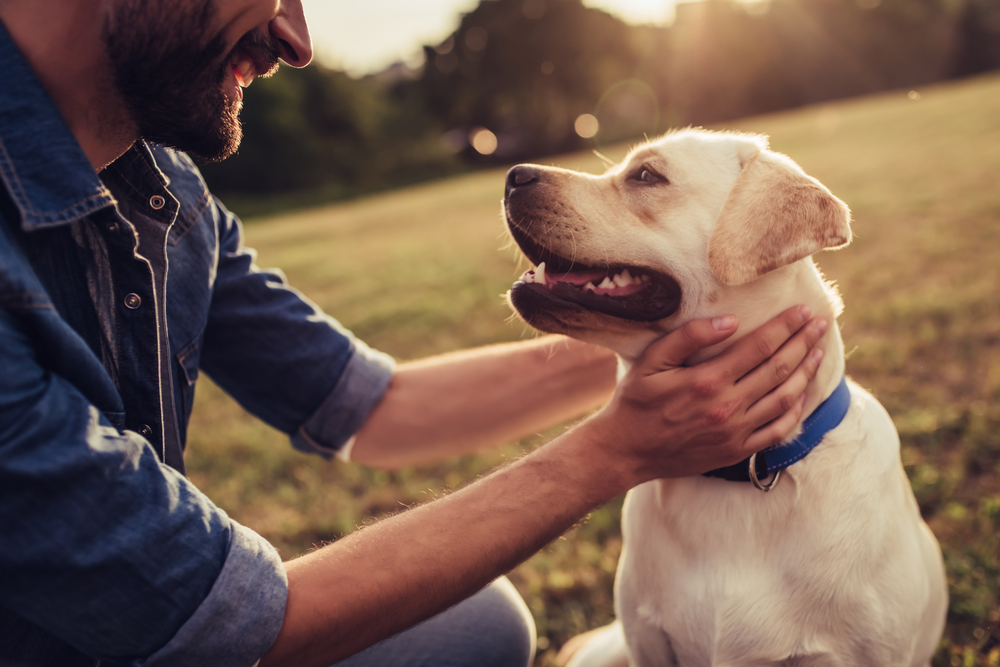Dogs with vestibular syndrome experience issues with their sense of balance. This condition is widespread and manifests through a series of typical symptoms. Below, we explain how to recognize if your dog is affected by this neurological disorder and the potential causes.
Balance Disorders – Symptoms of Vestibular Syndrome
When dogs suffer from vestibular syndrome, various symptoms may occur. In mild cases, it is often challenging to recognize vestibular syndrome in dogs, as affected animals typically cope well and only exhibit an unsteady gait.
However, there are exceptions. Vestibular syndrome may manifest through noticeable neurological abnormalities that occur unilaterally. These primarily involve coordination and balance disorders, which can become severe to the point where the dog struggles to stay on its feet.
Additionally, the following symptoms may indicate vestibular syndrome in dogs:
- Rapid eye movements or strabismus (rotary nystagmus)
- Head tilt
- Orientation difficulties
- Nausea and vomiting due to dizziness
- Circling or an unsteady gait
- Leaning against the wall

Dog tilting head – Causes of the Syndrome
Dogs, like humans, have a balance organ in the inner ear. Spatial orientation and coordination of movements are crucial components of this system. Dogs can develop vestibular syndrome due to disruptions in the balance organ.
The balance organ in the inner ear detects rotational movements and linear acceleration. The brain processes the sensory impressions gathered there. The coordination and correction of body and eye position occur based on this information. The mentioned symptoms occur because this process is disrupted.
Vestibular syndrome is classified into central, peripheral, and idiopathic forms. Central vestibular syndrome in dogs is triggered by ear infections, lesions, or infectious diseases such as distemper. Peripheral vestibular syndrome is caused by issues or injuries to the inner ear.
In dogs, peripheral vestibular syndrome can be hereditary, resulting from a congenital malformation of the balance organ. This condition becomes apparent in puppyhood and is known as congenital vestibular syndrome.
What is Geriatric Vestibular Syndrome?
Idiopathic vestibular syndrome is also referred to as geriatric vestibular syndrome. This degenerative condition occurs in older dogs. Possible triggers include circulatory disorders and poisoning from medications. The exact reasons for this form of vestibular syndrome in dogs are not yet fully understood.

Is the Disease Curable? Therapies for Vestibular Syndrome
It is advisable to visit the veterinary clinic if the mentioned symptoms occur in your dog. The veterinarian will examine your dog and determine if it is indeed suffering from vestibular syndrome.
The veterinary team will conduct a general medical history, perform neurological examinations, and examine the ears to locate the disease and determine its cause. Additional tests such as MRI scans and blood tests may be necessary.
The treatment depends on the examination results. Dogs with idiopathic vestibular syndrome are primarily treated to alleviate the occurring symptoms. To alleviate the symptoms, sedatives and anti-emetics may be used. Additionally, blood circulation can be promoted through stabilizing infusion therapy.
In cases of central vestibular syndrome, the underlying primary condition dictates the course and duration of the required treatment. Severe cases may require increased care. Some dogs may not be able to eat, walk, or relieve themselves independently during treatment.
Owners often feel overwhelmed or may not have the time to provide necessary care. Therefore, hospitalization in a veterinary clinic can be helpful initially. Improvement often occurs within a few days, and the dog can return home.
What Helps Your Dog After Treatment?
After overcoming the initial challenging period, many animals quickly improve. However, they still need close observation. A calm environment is crucial. To ensure your pet’s safety, smooth floors should be covered with carpets. In the first few days, offer easily digestible food. It is better to feed multiple small portions than one large portion, which relieves the organism.
During walks, the dog should be kept on a leash. In the initial walks, a towel under the belly can provide necessary support. The dog should regularly visit the veterinarian for check-ups to monitor the progress of recovery. Complete healing can occur within two to three weeks.
Prognosis – Should the Dog be Euthanized?
Vestibular syndrome is a widespread condition in dogs and cats. The situation can sometimes appear very dramatic, frightening many dog owners. The severity of the symptoms quickly gives the impression of unbearable suffering that one wants to relieve from the dog as soon as possible. Therefore, many dog owners face the question of whether to euthanize their dog.
The prognosis for dogs with vestibular syndrome depends on the exact cause. Peripheral vestibular syndrome is generally treatable. Affected dogs often do not suffer from permanent complaints. Treatment of vestibular syndrome usually leads to significant improvement within hours to three days. However, a certain amount of financial expenditure is required for this purpose.
This also applies to idiopathic vestibular syndrome, which in many cases disappears without treatment after a few days to weeks. However, there is a possibility of a relapse after some time. After recovering from vestibular syndrome, the head may sometimes remain tilted. Generally, a reduction in the dog’s quality of life is not expected.
For dogs with central vestibular syndrome, the prognosis often looks different. In this case, the disease is caused by severe illnesses. Therefore, the outlook for affected dogs in this case is significantly worse. Improvement may not occur despite treatment, so euthanasia may ultimately need to be considered.
Preventing the Disease
For older dogs, regular visits to the veterinary clinic are part of the program. Pet owners should pay special attention to their pets’ ears, as inflammation is a known trigger.
Otherwise, you can only follow the general advice that ensures a healthy and long dog life: Pay attention to a balanced diet and sufficient exercise. If you and your dog enjoy it, you can participate together in agility competitions.


